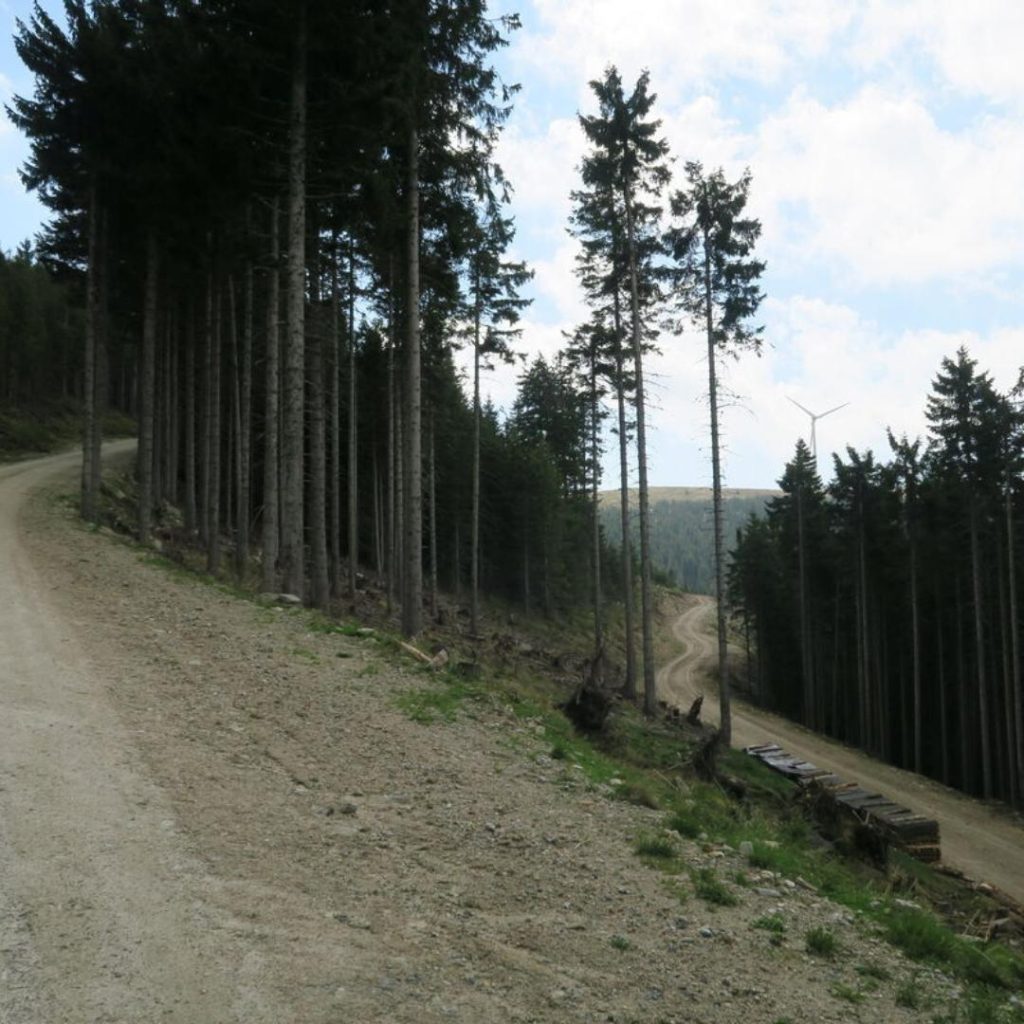According to a new WWF study, domestic forest roads stretch five and a half times around the world

Picture: Karin Enzenhofer
According to the first systematic forest road survey in around 30 years, the length per hectare has increased by 40 percent - this is of course due to the current logging methods, which require a well-developed forest road network. The WWF warns of the negative consequences and calls for stricter legal approval procedures to protect our most important heroes when it comes to carbon storage.
In Austria, there is an average distance of only 130 meters between two forest roads that can be used by trucks. This is the result of a new study carried out by E.C.O. - Institute for Ecology on behalf of the nature conservation organization WWF Austria. Taken together, all forest roads in Austria are 218,000 kilometers long - equivalent to five and a half times the circumference of the earth. In terms of hectares, their length has increased by 40 percent since the last study published in 1996.
"The extremely dense network of roads that can be used by trucks cuts up our forests and has a negative impact on their microclimate, their biodiversity and their ability to store carbon," says WWF forest expert Karin Enzenhofer. "However, primeval and natural forests are among our most important allies in the fight against the climate and biodiversity crisis, as they store a particularly large amount of carbon and provide habitats for a wide variety of animals and plants."
In order to reduce the negative impact of forest roads and protect large contiguous forest areas, the WWF is calling for stricter legal requirements:
"Approval procedures must take greater account of nature conservation and climate protection and be standardized nationwide and anchored in the nature conservation laws of the federal states," says Karin Enzenhofer. "Currently, even in protected areas, there are often only very weak rules or none at all for the approval of forest roads." In addition, forest roads need to be planned and designed in a way that is compatible with nature and the climate.
"The responsible politicians must ensure that only forest roads whose necessity and dimensions are comprehensible and justified are built and funded."
This requires cost-benefit calculations, analyses of ecosystem services and utilization concepts. Increased forest research is also important - there are still considerable gaps in knowledge, particularly with regard to the effects of forest roads on forest ecosystems in the context of the climate crisis and in connection with natural hazards.
The new study is the first systematic survey of the Austrian forest road network since 1996. "For almost 30 years, we had no up-to-date data on Austria's forest roads," explains E.C.O. Managing Director Hanns Kirchmeir.
"With the help of new, digital data sets, we have now been able to trace the development over the last three decades and show that their length has since increased from 35 linear meters per hectare to 49 - an increase of 40 percent."
In total, around four percent of intact forest soils and productive forest areas are lost due to forest roads and their embankments. This corresponds to a total area of around 190,000 hectares, or three and a half times the area of Lake Constance. "A random check of the data quality also revealed that an average of 18 percent of forest roads are missing from the data set used," says Kirchmeir. "The actual length of forest roads could therefore be considerably higher."
Road types considered
The study only considers roads that can be used by trucks. The majority are forest roads according to the Forest Act, but the data sets also include public roads. Temporary and unpaved roads (so-called logging roads) are not included.
And what does the Chamber of Agriculture say?
"A forest road is not a biodiversity dead end and certainly not a multi-lane forest highway," says Rudolf Rosenstatter, Chairman of the Austrian Forest Association, putting things into perspective. "Forest roads are long-term investments in the future in order to keep or make forests fit for the climate. Their construction is subject to strict legal requirements and conditions. Forest roads are not built for fun and games. They ensure our ability to act and good accessibility to productive forest areas and forest locations, which is of great importance in the event of forest fires, human rescue and natural disasters such as avalanches. Forest roads ensure the supply of wood as a raw material, are popular for hiking and walking, are habitats, sources of food and real lifelines in the forest. Without forest roads, there is no renewable raw material wood, which is urgently needed for the bioeconomy in order to finally drive forward the necessary exit from the fossil age," concluded Rosenstatter.






